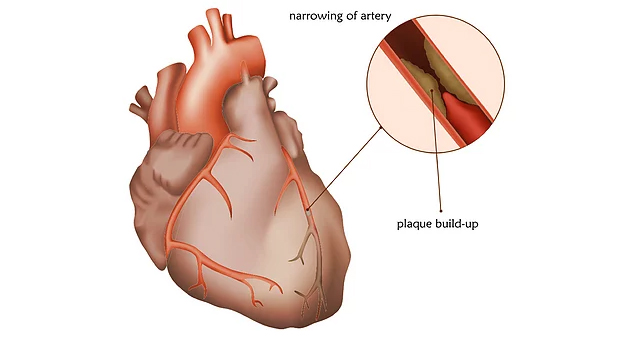Call us
(469) 513-26661018 East Wheatland
Duncanville, TX 75116.Our email
mail@advancedsurgical.com

Coronary Artery Disease
- Home
- Coronary Artery Disease
Coronary Artery Disease

What is coronary artery disease?
Coronary artery disease – also called ischemic heart disease or atherosclerotic heart disease – refers to a narrowing of the coronary arteries usually caused by plaque buildup in the walls of the arteries.
How does coronary artery disease develop?
The coronary arteries are the pipes that carry oxygen-rich blood to the heart muscle, but through the aging process and other factors, these pipes can become damaged. To repair this damage, the body reacts by making the inner lining thicker and by patching the damaged area with plaque. This initially does not cause any major problems, but as the process repeats over time, it can lead to narrowing of the artery called atherosclerotic heart disease. If the disease narrows the artery enough to cause a significant reduction in blood flow, it can lead to ischemic heart disease where the heart does not get enough oxygen.
Risk factors of coronary artery disease
There are many different factors that can cause damage to the coronary arteries and eventually lead to CAD. Some, like genetics, are known to play an important role but unfortunately cannot be controlled. However, there are many other factors that can be controlled through lifestyle changes or medications. The most common of these include smoking, diabetes, high blood pressure, and high cholesterol.
Symptoms of coronary artery disease
Common symptoms of CAD include shortness of breath and chest pain, but you may also feel the pain in your arm, shoulder, back, or neck. Initially, the symptoms may only come on during exertion, when the heart works harder. Symptoms that happen more frequently or at rest are concerning and should be evaluated by a doctor.
What can happen if coronary artery disease is left untreated?
The most worrisome complication of CAD is complete occlusion of one of the arteries, which causes a myocardial infarction, also known as a heart attack.
What is it?
Narrowing of the coronary arteries- Smoking
- High blood pressure
- Poorly controlled cholestero
- High LDL and low HDL
- Diabetes or glucose intolerance
Risk Factors
- Chest pain
- Shortness of breath
- Lightheadedness
- Palpitations
Symptoms
- Electrocardiogram
- Stress test
- Exercise or pharmacologic
Testing
- Echocardiogram
- Coronary Angiography
Imaging
- Medications
- Aspirin, antiplatelet, anti-anginal
- Coronary artery angioplasty / stenting
- Coronary artery bypass graft (CABG)

